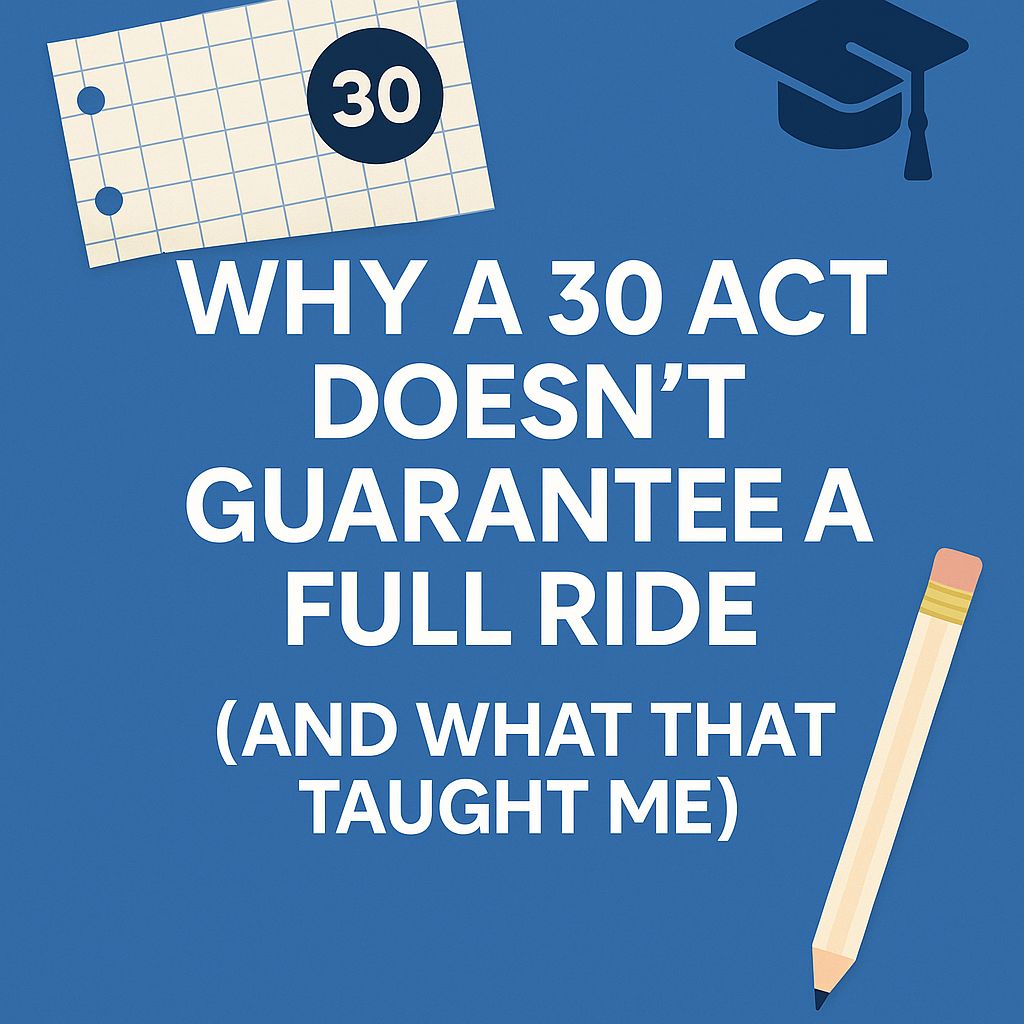
We thought we’d made it. She got the score. I told everyone. But the truth hit harder than I expected—and here’s what I wish someone had told me earlier.
When my daughter got her ACT score back—30—I was proud. Not just proud. Relieved.
I had spent the last year worrying about how we’d afford college. We don’t qualify for need-based aid. We’re not poor. But we’re not anywhere near rich either. So when she hit that number, I assumed what a lot of parents assume:
“That’s a free ride, right?”
That’s what an older man at work told me when I proudly shared her score. I nodded. He nodded. We both believed it.
We were wrong.
The Reality Behind Merit Aid
When I actually started researching schools, the story changed fast.
- Some schools offered scholarships—but only up to $10K, not full tuition.
- Others gave more, but only to out-of-state students. We live in Mississippi.
- Some “full ride” awards weren’t automatic. They required essays, interviews, resumes, and competitive review panels.
I realized something that still stings to admit:
She did everything right. But I didn’t know how the system actually worked.
The biggest surprise? Colleges don’t hand out full rides just because your kid is smart. They hand them out because your kid meets a quota, fills a gap, writes a great essay, or applies early enough to get noticed.
What I Wish I Knew Sooner
- ACT scores matter—but they’re not magic. A 30 might qualify for something, but not everything. And never assume it’s automatic.
- Start building a brag sheet early. The minute your kid joins a club, volunteers, wins an award—write it down. You’ll need it later.
- Use every Net Price Calculator. Don’t go by sticker price or hearsay. Each school has its own rules.
- Look beyond your state. Some of the best aid offers came from out-of-state schools that wanted her test score and GPA to boost their average.
We eventually figured it out. But not without stress, late nights, and that sinking feeling that maybe we’d missed our shot.
The Good News
You haven’t missed your shot.
You’re here now. And if your kid is in 10th, 11th, or even 12th grade, you still have options—real ones. But don’t assume anything. Don’t trust vague stories. Get your numbers, build your documents, and start early.
That’s what this site is here for.
I built this so no parent has to say what I said: “Wait—I thought we had it covered.”
You’ve got time. And you’ve got help.
Let’s get to work.
📌 Want help getting started? Download the free Starter Kit. It includes the brag sheet, checklist, and comparison tools I wish I had from the beginning.